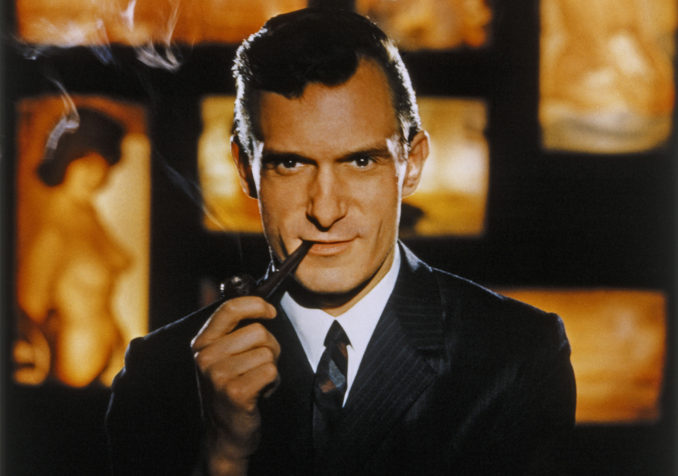 In 1953, a man, armed with $8,600 in borrowed money, set out to make his dream reality. He succeeded beyond his wildest imagination, creating an empire that made him rich, gave the world an iconic brand and ended up changing the world forever. The only thing keeping this from becoming a Wholesome, All-American Success Story was that the man was Hugh Hefner and the company was a magazine that published naked pictures of young, nubile women, Playboy. Hefner died today at his home, the infamous Playboy Mansion, of natural causes. He was 91.
In 1953, a man, armed with $8,600 in borrowed money, set out to make his dream reality. He succeeded beyond his wildest imagination, creating an empire that made him rich, gave the world an iconic brand and ended up changing the world forever. The only thing keeping this from becoming a Wholesome, All-American Success Story was that the man was Hugh Hefner and the company was a magazine that published naked pictures of young, nubile women, Playboy. Hefner died today at his home, the infamous Playboy Mansion, of natural causes. He was 91.
Hefner was an copywriter at Esquire magazine who resigned after the company refused to give him a $5 raise. It was then that he decided to put out a magazine of his own. Originally titled Stag Party until he was reminded that there was already a magazine called Stag, Hefner went through a number of other potential titles before settling on Playboy. For his first cover girl, he chose America’s greatest sex symbol of the day, Marilyn Monroe.
It was known that Monroe did some nude modeling before she became famous, but not many people ever saw the photos. Hefner tracked down the picture at a Chicago calendar manufacturer, who sold the images to Hefner for $500. Hefner published the first issue of Playboy without a cover date because he wasn’t confident there would be a second issue. It sold over 53,000 copies and a media empire was born.
Playboy differ from nudie magazines that came before it and after it because Hefner sold a lifestyle along with the magazine. It was a cultured man who read Playboy. A man who was hip to jazz and famous authors. A man with wit and a good sense of humor who liked the finer things in life. A popular joke was that people said that read Playboy only for the articles. The quality of the additional content gave the joke a dose of realism.
Hefner was a lifelong movie fan, and has dabbled in the world of film over the years. In the 1960s, he set up Playboy Productions. At first, the company produced his Playboy After Dark TV series but in the 1970s it moved into film production. It produced films by Monty Python (1971’s And Now for Something Completely Different), Roman Polanski (1971’s Macbeth), Arthur Hiller (1974’s The Crazy World of Julius Vrooder) and Peter Bogdanovich (1979’s Saint Jack). In later years, he would go on to produce documentaries on Hollywood sex symbols Clara Bow and Theda Bara.
He would also have cameos in films such as History of the World Part I and Citizen Toxie: The Toxic Avenger IV. And he was always happy to appear as himself in films where Playboy was a plot point, such as The House Bunny and Miss March. He also gave $1.5 million to endow USC’s Hugh M. Hefner Chair for the Study of American Film and $1 million to UCLA for their film and television archive. He was also fundamental in the renovation of the Hollywood sign in 1978.
Hefner’s resting place has already been settled. He famously bought the crypt next to Marilyn Monroe’s at the Westwood Village Memorial Park Cemetery in 1992 for $75,000.




